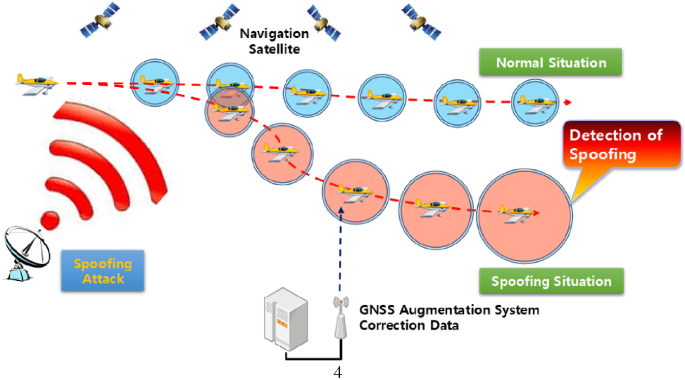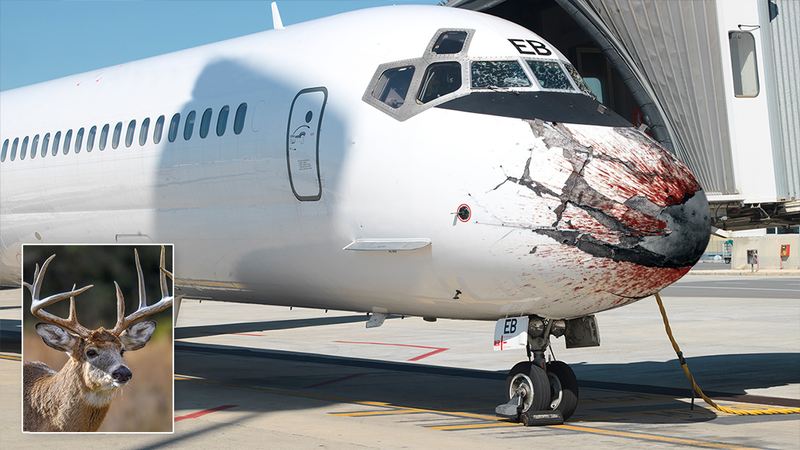The modern aerospace system relies heavily on the use of a number of wireless technologies necessary for the safe and secure operation of this very complex system. Thus, communication between air traffic controllers (ATC) and pilots is realized via VHF (30-300 MHz) radio frequency (RF) channels. The use of the ADS-B (Automatic Dependent Surveillance-Broadcast) wireless communication protocol or the GNSS (Global Navigation Satellite System), as an integral part of the ADS-B, allows the broadcasting of status data (aircraft position, speed, call sign, etc.), while Primary Surveillance Radar and Secondary Surveillance Radar allow locating aircraft and provide relevant information to air traffic controllers. The TCAS (Traffic Alert and Collision Avoidance System), independent of the air traffic control system, enables the detection and warning of potential collisions of aircraft with other aircraft in the air. In addition to the possibility of verbal communication, aircraft usually have the ACARS system (Aircraft Communications, Addressing and Reporting System) which uses RF communication channels, enabling the sending of automated messages in both directions, by aircraft as well as other aircraft entities. Also, many radio navigation systems, such as the GPS (Global Position System), the VOR (VHF Omnidirectional Radio Range), the DME (Distance Measuring Equipment) and the ILS (Instrument Landing System), play key roles in different phases of aircraft flight.
Satellite Positioning Systems (GNSS) like GPS, GLONASS, BeiDou, Gallileo can be the target of various attacks from basic jamming to more sophisticated spoofing of signals or even hard kill of satellites. While Jamming makes the GNSS unusable , Spoofing is a sophisticated form of RF interference which makes the receiver believe it is at false location. This would affect all the systems which rely on positioning from GNSS like ADS-B, TACAS, Performance Based Navigation/Communication/Surveillance and even more critical RNP approaches. A spoofing attack can be carried out from ground , air or space, where in a radio transmitter sends fake GPS signals (which mimic authentic satellite signals, but with higher power and different time delay compared to authentic signals) into the target receiver. Thus it makes receiver believe it to be at different place. In the last few years numerous jamming/spoofing attacks have been reported in military as well as commercial aviation, obviously close to regions of increased geo-political tension.
Till recently the attitude of civil aviation regarding GNSS spoofing was simple “This is not our problem”, and this issue was considered to be within the scope of military structures. However, as geo-political situation has deteriorated, and reliance of commercial aviation has increased on GNSS, certain measures to avoid spoofing are being looked into by introducing security solutions or protocols during the design stage.
ICAO (International Civil Aviation Organization), RTCA (Radio Technical Commission for Aeronautics) and EUROCAE (European Organization for Civil Aviation Equipment) are continuously analyzing and monitoring the development of effective antispoofing detection methods, as well as their integration into flight control, communication and navigation systems. For example, RTCA has set as a goal for next-generation aeronautical equipment, increasing the security of GNSS to risks in the presence of threats, including spoofing. Current directions in solving spoofing by RTCA and EUROCAE primarily relate to the introduction of new requirements for the detection of spoofing GNSS systems, which allows the use of alternative navigation equipment, without significant safety risks. ICAO has published a version (for verification and validation) of the concept of operations for the use of the Dual-Frequency Multi-Constellation (DFMC) GNSS in aviation (ICAO, 2018), the final version of which should be completed by 2022, while the Minimum Operational Performance Standard (MOPS) for GPS and Galileo on the frequency bands L1/E1 and L5/ E5a, is in the process of defining. The DFMC GNSS is expected to replace the current single-frequency GPS L1-C/A in future civil aviation regulations. Other evolutionary concepts involving the prominence use of the GNSS include the following systems: Advanced Receiver Autonomous Integrity Monitoring (ARAIM), Airbone Separation Assurance System (ASAS) and Multi-dimensional trajectory management.
A sensitive topic such as spoofing aviation navigation systems can’t be taken lightly. Relying on a long history without any events may not be reliable indicator of the future, especially as it is very difficult to monitor for spoofing threats. The relationship between service providers and mischief creators is ever evolving along with technology. At present the industry response has been slow whereas threats in various parts of the world has increased multifold.
How do we know we have been spoofed? We may observe some anomaly but it is very difficult to find out if it was a simple equipment malfunction or a targeted spoofing attack. The best bet to ensure safe navigation across the globe will be by ensuring-
- Increasing awareness amongst operators and flight crew.
- Avoid flying in such areas or rerouting to avoid problem areas or diverting when unable to perform safe landing.
- Reporting any incident of jamming or spoofing experienced.
- Logging with aim to understand what happened.
- Raising Alarm to warn other crew and ATC in the vicinity.
- Relying on old traditional means of navigation (ILS, VOR/DME, NDB and Radar) and cross checking position with respect to it when under attack.
- If suspecting spoofing, airlines should advise crew to disable GNSS signal and isolate Inertial Reference System.
- Inertial Reference System (IRS) position is continuously updated from GNSS and likely to get degraded during spoofing. However, the system (FMS) should be able retrieve IRS standalone position which is always available as long as system is working. Crew should be trained or advised on the procedure to retrieve unadulterated IRS position from FMS.
- Crew may be further advised to use DME/DME position to update IRS position to maintain required navigation performance and accuracy.
Safe Navigation and Happy Landings.



